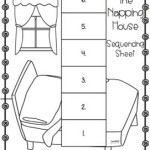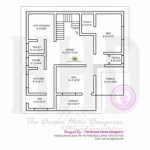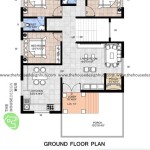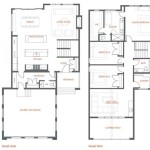Sears Bungalow House Plans 1923: A Symphony of Charm and Functionality
Step back in time to the early 20th century, an era when the Sears, Roebuck and Company catalog held sway over American homes. Among the company's many offerings were bungalow house plans, a style that epitomized the American Dream of affordable, comfortable, and stylish living.
The Sears Bungalow House Plans of 1923 were a particularly noteworthy collection, showcasing a diverse range of designs to suit various tastes and budgets. These plans embraced the Arts and Crafts movement's influence, emphasizing natural materials, simplicity, and functionality.
Characteristics of Sears Bungalow House Plans 1923
Sears Bungalow House Plans 1923 were characterized by several distinctive features:
- Low-pitched roofs: The hallmark of bungalow architecture, these roofs provided a cozy and inviting atmosphere.
- Wide porches: Generous wrap-around or front porches were an integral part of the design, extending the living space outdoors.
- Natural materials: Wood, stone, and brick were commonly used, reflecting the Arts and Crafts philosophy of using honest and enduring materials.
- Open floor plans: Living and dining areas often flowed seamlessly into one another, creating a sense of spaciousness.
- Built-in features: Shelves, cabinets, and window seats were often built into the walls, maximizing storage and functionality.
Popular Sears Bungalow House Plans 1923
Among the most popular Sears Bungalow House Plans 1923 were:
- Model 110: A compact and economical plan, featuring two bedrooms, a living room, and a dining room.
- Model 123: A larger plan with three bedrooms, a sunroom, and a full bathroom.
- Model 135: A spacious plan with four bedrooms, a formal dining room, and a fireplace in the living room.
- Model 152: A visually striking plan with a wrap-around porch, bay windows, and a dormer window.
Legacy of Sears Bungalow House Plans 1923
The Sears Bungalow House Plans 1923 played a significant role in shaping the American home. They brought affordable, stylish, and functional design to the masses, contributing to the widespread popularity of bungalow architecture.
Today, many of these homes still stand, lovingly restored and modernized to suit contemporary tastes. Their charm, functionality, and historical significance continue to inspire homeowners and architects alike.

Craftsman Style Bungalow 1923 Sears Modern Home Kit House Walton Vintage Plans

Sears Roebuck Kit Houses 1923 Retronaut Craftsman House Bungalows Style Homes

1923 Sears Modern Home Kit House Sunbeam Craftsman Bungalow With Colonial Reviva Plans Vintage

Vintage Small House Plans 1923 Sears Brookside Craftsman Style Bungalow Kit

Craftsman Cottage 1923 Kilbourne Kit Home Sears Honor Bilt Modern Homes Bungalow Cross Gable Roof

Avalon 1923 Sears Kit Houses Bungalow Small Craftsman Home

Sears The Argyle 1923 Two Bedroom Bungalow Makes Its Owner

The Sherburne 1923 Sears Roebuck Modern Homes Popular For Many Years Provided Craftsman Style Bungalow House Plans Vintage

1923 Hamilton Sears Modern Homes Kit Houses Clipped Gable Bungalow

1923 Elsmore Sears Modern Kit Homes Houses Small Craftsman Style Bungalow








